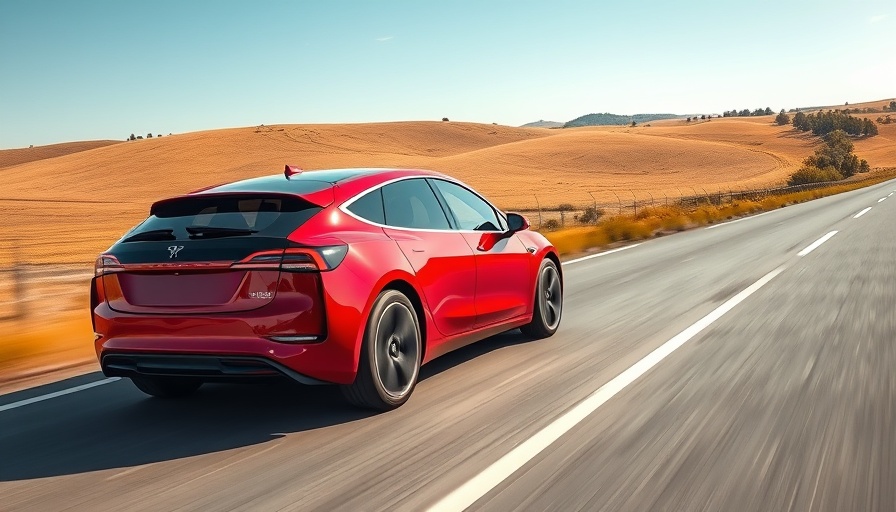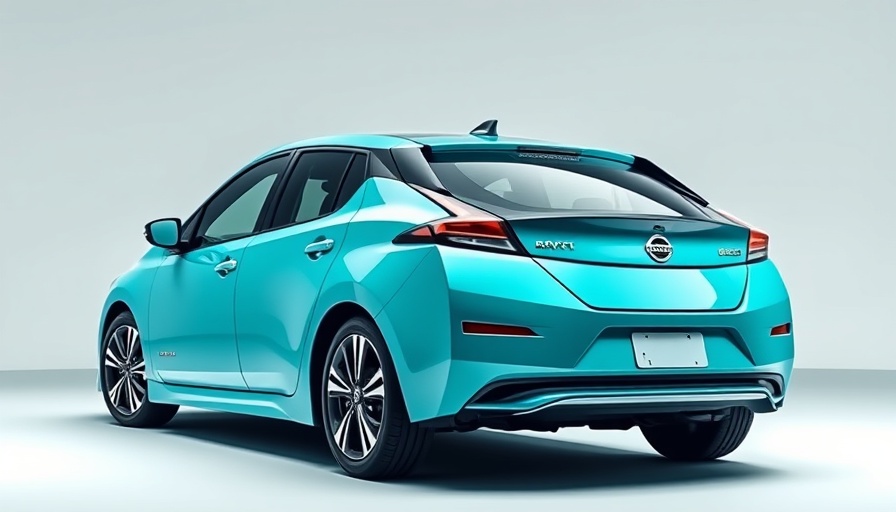
WattEV Leads the Charge in California's Electric Future
WattEV is on a transformative journey toward the electrification of freight transport in California with the development of three new megawatt charging depots in Southern California. This ambitious expansion is an essential step in supporting the increasing demand for electric trucks, facilitating rapid charging capabilities designed for heavy-duty vehicles.
Infrastructure Expansion: Key Details on New Charging Depots
The new sites collectively feature 29 high-capacity MCS chargers, allowing for nearly 100,000 charging sessions annually. Notably, the Otay Mesa site, developed in collaboration with San Diego Gas & Electric, strategically positions itself less than a thousand feet from the US–Mexico border to manage the cross-border freight flow. Meanwhile, the Baker depot will enhance connectivity along the I-15 corridor to Southern Nevada, serving as a critical support point for transporting goods to Las Vegas and its outlying areas. The Port of Long Beach will house twelve chargers, integrating advanced Silicon Carbide-based technology to ensure effective and efficient charging.
Funding and Technology: Powering California's Electric Future
The California state government has provided over $24 million in grants to support these developments, highlighting the government's commitment to revolutionizing transportation through electrification. The use of Solid-State Transformers (SST) developed under WattEV’s Charge America division streamlines installations by minimizing complexity and expense. These innovations help achieve the targeted charging time of 30 minutes or less, a substantial benefit for freight operations.
The Journey Towards Zero-Emission Freight Services
As Salim Youssefzadeh, CEO of WattEV, aptly states, “The inflection point in freight electrification is arriving,” foreshadowing a critical shift in logistics towards sustainable practices. WattEV's integrated model, which combines electric trucks with high-power charging infrastructure and optimization services, is gaining traction. Currently, this model makes available over 200,000 zero-emission freight miles monthly, emphasizing the potential impact of electric truck fleets on California's environment and economy.
The Future of Electric Transportation: Insights and Predictions
WattEV plans to deploy 12,000 electric heavy-duty trucks in California by 2030, including recent orders for 40 all-electric Tesla Semi trucks. The company's long-term vision includes 100 operational charging sites by 2035, which signifies an extensive commitment to creating a backbone for sustainable transportation. As the demand for mega-charging facilities grows, WattEV's approach may serve as a blueprint for how businesses can align with California’s ambitious zero-emission transport goals.
Diverse Perspectives: Industry Reaction and Future Trends
The advent of such facilities reflects a broader trend in the electric vehicle (EV) sector, where success hinges on the availability and reliability of charging infrastructure. As electric trucks become more commercially viable, businesses must adapt their strategies to incorporate sustainable practices without sacrificing efficiency. The advancements made by WattEV not only illustrate corporate responsibility but also pave the way for a cleaner, more economically viable future for freight operations.
Understanding the Broader Context: Impacts on Homeowners and Businesses
For homeowners and businesses invested in solar and green energy, the expansion of electric vehicle infrastructure signifies an important opportunity. The combination of EV charging and renewable energy systems enhances the viability of green solutions, increasing grid independence and fostering a sustainable energy ecosystem. With electric transportation gaining ground, the synergy between energy production and consumption will further empower societal shifts towards sustainability.
Action Steps for Green Energy Adoption
As researchers and businesses observe these developments, it becomes crucial for consumers to understand how these technologies can be integrated into their lives. Investing in solar-powered electric vehicle charging stations not only contributes to decreasing the carbon footprint but also opens doors to potential energy savings and reduced dependence on fossil fuels. The time to embrace greener lifestyle choices, aligned with technological advancements like those provided by WattEV, could very well be the game-changer in achieving a sustainable future.
In conclusion, the unveiling of these megawatt charging depots by WattEV not only enhances transportation efficiency but also underlines California’s commitment to sustainable energy practices. For those invested in green energy solutions, embracing the electrification of freight transportation is a crucial piece of the larger puzzle toward a sustainable future. Explore opportunities to align your energy strategies today!
 Add Row
Add Row  Add
Add 



Write A Comment